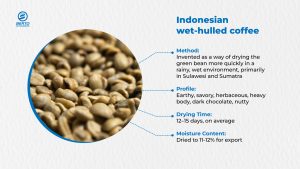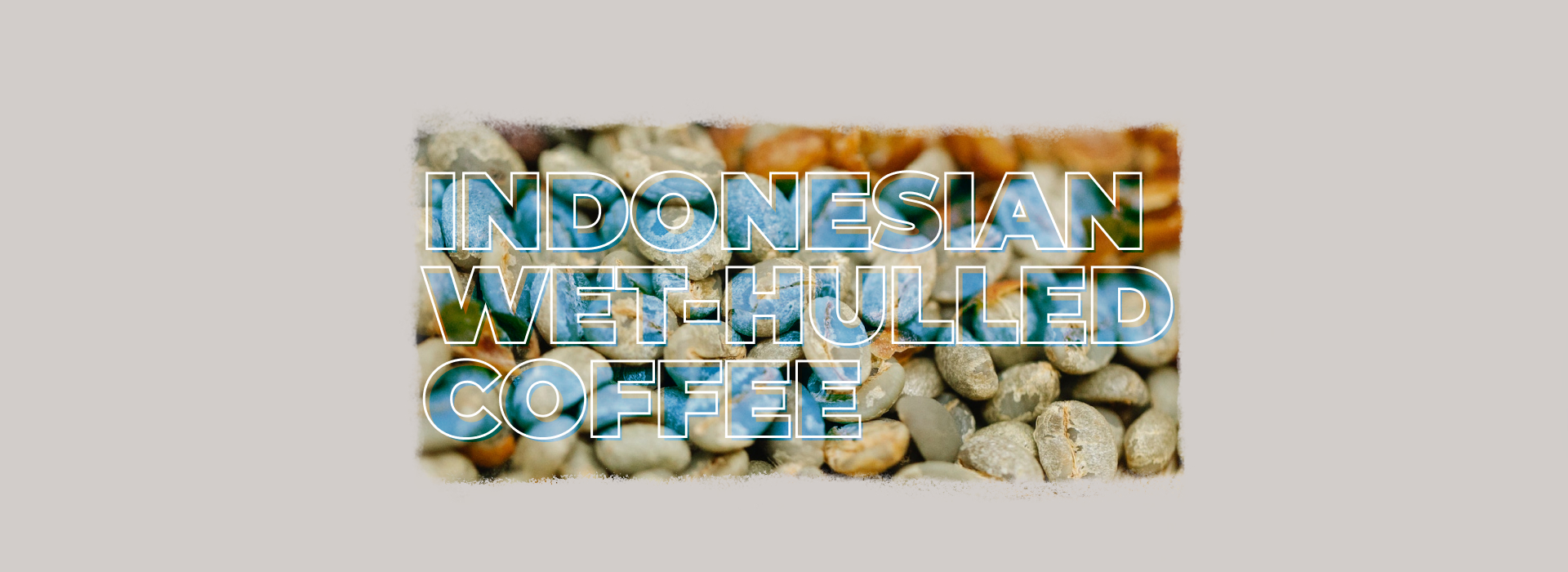What is the Indonesian Wet-Hulled Coffee Process?
The wet climate makes it challenging for Indonesian coffee to dry during post-harvest processing.
Especially during monsoon, the humidity in Indonesia prevents easy drying so much that coffee farmers had to find an alternative way for better efficiency. There is also the desire to get their coffee to the market as quickly as possible, which was a driving force behind the creation of this coffee processing method. The longer the drying time, the longer the wait to ship it off. And so the wet-hulled process, known locally as giling basah, was born.
Wet-Hulling is a type of coffee processing that is best for tropical climates but is unique to Indonesia more than other southeast Asian coffee producers. In Indonesia, it is most commonly used in Sulawesi and Sumatra. Many people say the earthy, savory, and herbaceous flavor profile of Indonesian coffee is achieved thanks to this special process.
How does this unique Indonesian coffee processing method work?
Similar to the washed or honey process, the depulping of cherries happens as soon as the fruits are picked. In some coffee farms, the seeds in their mucilage go straight into a fermentation tank to be left overnight. However, not all Indonesian farmers take this approach, as there are more steps yet more control over each stage of the process. In many other places, producers depulp the coffee on their individual farms, put the sticky seeds in sacks, and transport them to the market to be sold. From there, they are brought to the mill to be wet-hulled.
Essentially, wet-hulling is removing the seed’s parchment layer before the seeds are fully dry. Removing that layer while it is still wet allows the seeds to dry efficiently. But before the parchment can be removed, it is spread and raked into a thin layer on tarps on concrete and left to dry typically for a few hours to a full day depending on the weather conditions, whether it’s too wet or overcast. These conditions are the reason why it’s hard to dry Indonesian coffee without wet-hulling the seeds. The seeds will have to reach around 30 to 35% moisture before they take it to the next step. When they are semi-dry, they are ready to be wet-hulled.

The wet-hull machine operates not unlike a depulper, only it is calibrated to remove the parchment layer from the coffee seeds instead of the outer skin. The original pieces of wet-hull equipment were installed in Sumatra as early as the 70s, powered by an old Mitsubishi car engine.
Wet-hulling is known to be a somewhat ‘shocking’ process for Indonesian coffee. Some seeds will be chipped or split in the machine, and the finished green coffee will look different to the results from other coffee processing methods. This is called kuku kambing or goat’s nail, reflecting its defect shape.
After being wet-hulled, and now that the layers are removed, the seeds will have increased exposure to air, heat and sunlight. They are brought back out to the drying area to be spread out again and left to dry to reach 11 to 12% moisture. Then, they are placed in sacks and stored for export.
Do Indonesian farmers really need to use this method?
An average coffee needs at least two to three weeks to dry in a warm area, but it would take much longer in Indonesia’s rainy and humid regions. Bacteria would cause coffee defects long before the beans would be at a low enough moisture content to dry. Keep in mind that coffee is often dried with its parchment layer intact, which protects it from harm and helps maintain consistency while the bean dries. Wet-hulling removes the parchment but it allows the sun’s heat and light to directly penetrate the bean, drying 2-3 times faster. So, yes! It saves time!
The quality of wet-hulled coffee varies but when done well, you’ll have yourself an amazing cup of coffee. Have you tried wet-hulled coffee? Let us know on Instagram or Facebook.


